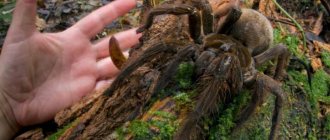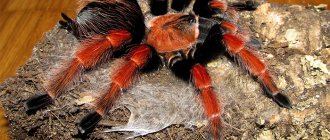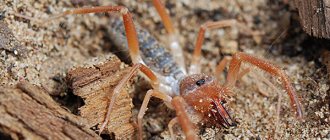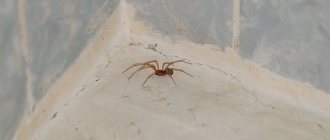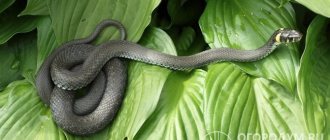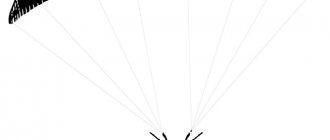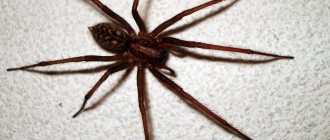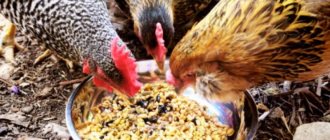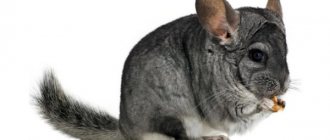Climate warming is already affecting all natural processes and phenomena on the planet. Of course, changes in weather conditions also affected the composition of the fauna, not only somewhere far away, on other continents, but also in many regions of Russia. For example, in the Rostov region, some animals and insects, previously considered exotic, have become permanent neighbors of local residents over the past 5-10 years. Of course, some of them will definitely decorate and enrich the local nature. But among them there are also those whom you would not want to meet at all because of their mortal danger. Moreover, the migration of poisonous animals to the north continues. Over the past few years, it has already been found even in the Moscow region. Increasingly, information appears in social networks and the media about “black widows” and aggressive snakes that are spotted in rural areas and metropolitan parks. And there are already some first victims. Fortunately, there have been no deaths so far. However, you need to be aware of the danger.
Dangerous spiders and snakes have chosen the Moscow region and capital parks
Description and photos of spiders in the Moscow region
Arachnids belong to the arthropod animals of the Arachnida class, which differ from insects in the number of legs (8, not 6).
They are widespread throughout the world, more than 42 thousand species of spiders are known, and some species live in the central European part of Russia, including the Moscow region. Spiders in the Moscow region live both indoors with people and in the wilderness. Arachnids are predators because they feed on insects. They first catch them using a web or other means, and then immobilize them by injecting special saliva, which is produced by the glands. Some species are poisonous, while others are completely harmless to humans. Below are photos and names of various species of spiders living in the Moscow region.
Where are there snakes in Moscow?
In Moscow and the region you can find only three types of snakes: the common snake, the copperhead and the common viper. Snakes live along the banks of rivers and other bodies of water, where they hunt fish and various amphibians. Copperheads are the rarest species, which is included in the Red Book of Moscow and the Moscow region. They prefer dry meadows, forest clearings or roads. Both of these species are not poisonous and are not dangerous to humans, except that they may bite when trying to catch them.
As for vipers, they are found in clearings, clearings, swampy meadows and summer cottages. Vipers are black (easy to spot) and gray-brown with a dark zigzag stripe - they are most often stepped on when walking through long grass. In addition, vipers like to bask on logs or among woodpiles - in such places people also become victims of accidental bites.
Already ordinary
Features
Spiders have eight legs, unlike insects. The forelimbs are equipped with chelicerae, which are poisonous claws. Spider warts are usually located on the lower part of the body, usually in 3 pairs. Some insects also spin webs, for example, caterpillars, but the web of spiders does not break under the force of prey, because it is elastic. There are pairs of eyes located on the head, their number is often 8 or 6, occasionally 2 are found.
Digestion is of the extraintestinal type. For example, a praying mantis chews its caught prey, but spiders inject liquefying enzymes into the carcass. Once softened, they suck out the insides. Arthropods do not attack people or animals first; they bite only if they sense danger. If a spider falls on a person, it should be blown away, but not hit.
Males have bulbs on their limbs in front, which contain sperm for fertilization. Some males run away after mating and save their lives, others agree with the fate of the victim and allow themselves to be eaten. Compared to females, males live short lives. Spiders are caring mothers; they weave small cocoons in the shape of a ball to nurse their babies.
Ancient Kabardino-Balkarian legend
As already mentioned, there has long been a legend about monster spiders in this republic. Many people believe that in ancient times there lived
spiders
-cannibals
huge sizes. Their lair was located in a deep gorge near the Shauppopot hill.
These spiders, according to legend, lay in wait for travelers, lured them into their webs and sucked their blood. In the end, one of the great rulers of the Caucasus of that time gathered an army and went to this gorge. Many of his warriors died from spider bites. However, the monsters were eventually destroyed.
Types of spiders in the Moscow region
Here, neither specialists nor ordinary people have any disagreements and there cannot be any. Karakurt is the only one of all the representatives of arthropods living in the vast expanses of our country whose bite can be fatal.
Appearance
Only females reaching a size of 15-20 mm are dangerous to humans. They have two distinctive signs that prevent karakurts from being confused with other representatives of arthropods.
There are exactly 13 bright spots or dots on the upper side of the black abdomen. Naturally, there is no time to count them, but the very combination of black with bright spots should serve as a signal of danger.
On the underside of the abdomen there is one equally bright spot in the shape of an hourglass.
Karakurt is the only spider in Russia whose bite can be fatal
Habitats
Karakurts are thermophilic. They live in the Southern Urals, the Caucasus and the Black Sea regions. However, recently the habitat of this spider has expanded to more northern regions of Russia, right up to the Moscow region. This is explained by global warming, but more optimistic scientists are confident that this only happens in very hot years, and not always.
Consequences of a bite
Karakurt, which has a very strong poison, unlike other spiders, is very aggressive and bites not only for the purpose of self-defense. He can attack purposefully, so you should not only tease him, but also approach him with great caution. The bite itself is very painful, and after 10-15 minutes the pain spreads throughout the person’s body and becomes almost unbearable.
If assistance is not provided in a timely manner, which consists of administering a special serum, shortness of breath, nausea, vomiting, rapid heartbeat, fever, headache and dizziness, tremor, profuse sweating, and a feeling of heaviness in the chest may develop.
We suggest you read: Where do spiders come from in your apartment and house? Even after the administration of the serum, symptoms may persist for another day
First aid
The only thing that can be done for the victim is to take him to the nearest hospital as soon as possible.
In the vastness of the Russian Federation, you can meet other representatives of arthropods that are capable, if not of killing a person with their bite, then of causing a lot of painful sensations.
- South Russian tarantula. The venom of this fairly large spider, reaching 30 mm in length, is not fatal to humans. However, the bite site swells very quickly and is very painful. An allergic reaction is possible in the form of rashes and redness of the skin, accompanied by itching and burning in places where the scratch is made. South Russian tarantula
- Heiracanthium. Tops the list of poisonous spiders in central Russia. Unlike the karakurt, it does not specifically attack and can bite only for the purpose of self-defense. The symptoms are quite unpleasant: a strong burning sensation at the site of the bite, nausea, vomiting, headache, fever, body aches, weakness. The bite site itself looks quite scary: it turns red, blue, and may even become covered with blisters. This condition can last up to 3 days. Seeing a doctor is mandatory.
Heiracanthium does not specifically attack people, but can bite in self-defense
- Phalanx (solfuga). One of the few spiders, after a bite it is recommended to suck the wound. It does not have its own toxic poison, but it will certainly cause an infection, causing the wound to become inflamed. It is active only in the dark, but does not bite on purpose, only as a defense. Phalanx
- Web spider. A rather small spider, it is dangerous, like the previous representative of arthropods, not by poison, but by the possibility of introducing infection into the wound. Web spider
Bagworm (bag spider). This spider is aggressive enough to attack even in the absence of direct danger. The bite is not fatal, but is accompanied by very severe pain, which can spread very quickly throughout almost the entire body.
Pouch spider
• False black widow. First of all, it is dangerous because it often gets into living quarters. After the bite, acute, prolonged pain, weakness and fever are felt. Symptoms may last up to two days.
We suggest you read: Can a bumblebee sting, and what to do after that? False black widow
- Black fathead. The most peaceful of dangerous spiders. If you don't touch him or pick him up, he prefers to hide. However, if it bites, the wound will hurt for at least a day. Black fathead
- Argiope. The bite of this striped spider is very dangerous. An allergic reaction to poison can result in deep and severe abscesses, deterioration of general condition and other unpleasant symptoms. Argiope
As you can see, poisonous spiders are far from uncommon in Russia, but only the female karakurt should be greatly feared. You can easily cope with the consequences of bites from other arachnids on your own. However, seeing a doctor is highly recommended.
Not everyone can distinguish one type of spider from another, despite the fact that the colors and patterns on their abdomens are different. And they all differ from each other in size and length of their legs. However, often people begin to panic and simply do not pay attention to what their offender looks like.
In most cases, symptoms begin to appear quite quickly and first aid should also be prompt, but thoughtful.
- The first thing to do is wash the wound with soapy water.
- The next action should be aimed at preventing the spread of the poison. This is achieved in two ways: immobilize the affected limb with a splint and apply a tight bandage above the bite site, thereby reducing blood circulation.
- It is worth applying a cold compress to the wound itself, which will also delay the action and spread of the poison.
- Drinking more will also be a reducing factor. It will also help remove poison from the body.
- In order to relieve painful symptoms, you can give the victim an aspirin tablet.
Having done all this, there is no need to calm down. It is imperative to take the victim to a doctor, even if he is a few kilometers away. The clinic will provide more qualified assistance and will be able to take emergency measures in case of complications.
Of course, you can add some more aspects, covering the question: are there poisonous spiders in Russia and what to do if you encounter them. But this information will be for specialists. Ordinary people need to remember that under no circumstances should they play and have fun with spiders. But you shouldn’t just destroy them either.
What should a person do if they are bitten by a karakurt?
Repkin advises that if you are bitten, consult a doctor as soon as possible. “For medical care, anticarcourt serum is most often used. It usually works quite effectively and, when administered promptly, allows one to avoid most of the unpleasant consequences of a bite. First aid on the way to a medical facility is as follows: it is recommended to immobilize the limb (if the bite was made to it). The victim should be kept at rest until he receives qualified assistance. To reduce pain, you can try applying a cold compress to the bite site. You can give the patient a hot drink. Under no circumstances should you apply tourniquets (below or above the bite site) or make any incisions on the bite wound. Not only will this not help, but it may harm the victim,” says the specialist.
The famous Soviet entomologist Pavel Marikovsky proposed an unusual method of emergency treatment for a karakurt bite: cauterize the wound with the lighted heads of one or two matches. “Karakurt poison consists of proteins that decompose at high temperatures. This method should be used immediately after the bite - within 1-2 minutes, until the poison has time to be absorbed into the blood. However, perhaps not all the poison will be destroyed in this way. In addition, the person receives a burn, albeit a small one. Therefore, this method of treatment can be used in an emergency if it is not possible to quickly get to a doctor,” advises Repkin.
Question answer
Who do mosquitoes bite more often?
Harmless arachnids of the Moscow region
Non-venomous spiders include those species whose venom is absolutely non-toxic to humans and only affects insects. Several such arthropods live in central Russia: brownies, haymakers, side walkers, knitting spiders, etc.
House spiders
The most common spiders around the world are house spiders, which get their name from their close proximity to people's homes. They belong to the funnel family. They are found in apartments, outbuildings in the country or in the city. The spider's web has the shape of a funnel; it begins its weaving in a dark corner under the ceiling or even behind a closet.
Interesting!
The “house elf” itself usually sits in the middle, waiting for prey to arrive or run in, after which it quickly runs up along the threads and deals with the insect.
Distinctive features of the house spider:
- female size – 12 mm, male – up to 10 mm;
- the chitinous cover is colored in gray-brown shades;
- there is a pattern of brown spots on the back;
- The paws are 2 times longer than the body.
Knitters
This species lives only in the natural environment, avoiding encounters with humans. Knitters weave huge circular webs designed to catch only one type of insect - long-legged mosquitoes. For the spider, they are the most favorite treat.
Differences from other types of spiders:
- the body has an elongated shape;
- the size of females is 10 mm, males are smaller;
- legs are very long;
- the jaws (chelicerae) are covered with projections.
Interesting!
Knitters have an interesting feature: when in danger, they stretch their legs along the body, visually turning into a small straw, almost invisible against the background of leaves and trees. When touched, the spider falls down and runs away.
Argiopes
The common name of the species is Argiope. The spider attracts primarily with its original appearance. The predator has a bright color of black and yellow stripes, which makes it look like a wasp. Short hair can be seen on the head and chest. Females are 5-6 times larger than males and can reach a length of 3 cm. The long legs consist of a large number of jointed areas.
The habitat of agriope is central Russia. They are also found in other areas with a temperate climate, most often in the Stavropol Territory. The spider bite is very stinging and the pain is comparable to that of a bee. Argiopes prefer to exist alone and approach their compatriots only to mate.
A predator will never be the first to attack a person unless the latter shows obvious aggression. A small allergic rash appears at the site of the bite, which is accompanied by mild pain. The swelling goes away in about 2-3 days.
Micromat greenish
This type of spider lives in forests, settling among grass and plants. Its bright color helps it hide among the green parts of plants. The dimensions of the micromata are small - the largest green spider barely reaches 1 cm. Their poison is non-toxic and does not pose a danger to people.
Social structure and reproduction
Photo: Argiope Brünnich spider
Females are ready to enter into mating relationships after molting. Most often this happens with the onset of the autumn season. It is after the end of molting that the female’s mouthparts remain soft for some time, which leaves the males a chance to survive after mating. However, this does not always help males survive. To lay eggs, females vitally need protein, the source of which can be a partner.
Before mating, males look closely for a long time and choose the female they like. They have been nearby for some time. When the male approaches the potential partner he likes, the threads of the trapping net do not vibrate, as when prey hits them, and the female understands that the time has come for mating. Males tend to “clog” the chosen female so that no other contenders can fertilize her.
About a month after mating, the spider lays eggs. Before this, she weaves one or several cocoons, in each of which she lays about four hundred eggs. After the cocoons are filled, the female fixes them near her web using reliable, strong threads.
The eggs survive the winter in these cocoons. Spiders hatch from eggs only in spring. From childhood, individuals of this species experience fierce competition for survival. The lack of food in the limited space of the cocoon encourages stronger spiders to eat weaker and smaller ones. Those who survive get out of the cocoon and climb higher onto various types of vegetation. They lift their abdomen up and release a web. Along with the wind, cobwebs and spiders are carried in a variety of directions. The full life cycle of a spider averages 12 months.
Poisonous spiders of the Moscow region
To identify such a dangerous spider, you need to know how it looks and behaves in case of danger (data is given in accordance with the official identification of spiders in Russia).
Cross
Cross spiders prefer to feed on flying insects, which include mosquitoes, flies, bees, butterflies, etc. They hunt using webs. When the prey is already entangled in the web, the spider runs up to it and injects a special liquid, which is called digestive juice, because it turns the victim’s body into a partially digested state. After waiting a certain time, the cross eats its victim.
If the spider is well-fed, it leaves its prey in reserve, hanging it on the edge of the web. Crosses are found in mixed and pine forests of the Moscow region, in swamps, meadows and arable lands, as well as in gardens (rarely).
The danger of a spider bite is associated only with the possibility of infection and probable individual intolerance to its toxins.
Hyracantida
This species is one of the most poisonous spiders in Russia, living in central Russia. Chiracantids settle among grass and shrubs, preferring the natural environment. By nature, they are wandering hunters who go out to fish at night. When the victim touches the spider, it quickly attacks her. The main diet consists of caterpillars, moths, aphids, grasshoppers and mites.
In some species of chiracantids, the hatched offspring exhibit the ability to matrifagy, i.e., eating the female guarding them (mother spiders).
Distinctive features of the spider:
After a chiracantida bite, a burning pain may occur, which then spreads to the surrounding tissues of the limb. Then the lymph nodes located in the bite area begin to swell and ache, followed by swelling and impaired joint mobility. Some people may have breathing problems. Local negative symptoms usually disappear within 12-48 hours.
Karakurt
These arachnids belong to the genus of black widows and are the most poisonous. The body color is specific: on a glossy black coat there are 13 bright red spots bordered by a white stripe. The female's body size can reach 2 cm, and the male's - 0.7 cm.
Pogrebnoy
He got his “nickname” due to his love of living in cellars and barns. In these buildings, he finds crevices and cracks in the wooden elements that are optimal for his habitation. The spider is small, the average size is 10 mm. The head is colored brown or black, the abdomen is lighter - from red to brown. Pogrebnyaks are characterized by a hot climate; in Russia they prefer to live in the Krasnodar Territory and the Republic of Crimea. A bite from a porcini mushroom can lead to fever, nausea and fever. They themselves do not attack, but if the spider senses real danger, it will defend itself.
Steatoda
When people start talking about poisonous spiders in Siberia, they cannot do without steatoda. The description of the appearance is similar to life-threatening creatures -. But, unlike its relative, the steathod does not pose a danger to humans, it very rarely bites, and prefers to hide by flight.
Steatoda is called false karakurt. with black shiny color. There is a red pattern on the dorsal side of the convex abdomen. In young individuals it is pale and darkens as it matures. The average body size of the female is 2 cm, the male is slightly smaller. Long powerful chelicerae are clearly visible on the head. The pedipalps are more like another pair of limbs and perform almost the same functions.
Steatodes live in forest thickets, are found in houses, and penetrate inside through open windows and cracks in the wall. They are nocturnal and do not tolerate bright sunlight. During the day they hide in shady places and go out hunting at night. Their food is insects, often flies.
South Russian species of tarantula
One of the largest spiders in central Russia is the South Russian tarantula, females of which can reach 3 cm, and males are smaller (2.5 cm). The chitinous cover has a gray-brown color, less often – red or brown with a pattern on the abdomen. The entire body and paws are covered with dense short hairs.
South Russian species of tarantula
Their usual habitat is steppes and forest-steppes, semi-deserts, where they dig holes that go vertically down 40 cm. Inside, the tarantula covers the walls with its own web. It waits for prey at night, sitting at the entrance. When an insect appears, it quickly jumps out and inflicts a bite.
Interesting!
The tarantula bites only in self-defense; at this moment it jumps high (up to 15 cm in height) and instantly pierces the chelicerae into the skin. Tarantula venom is less toxic; after its bite, swelling appears, and the skin turns yellow for a long period (up to 2 months), and some health problems may occur in humans.
When encountering any species of spiders in the forest or in nature, you must be careful and not try to touch them or show interest. This is the only way to ensure your safety, because an attack and a spider bite can only occur for the purpose of self-defense.
Social structure and reproduction
Photo: Karakurt spider in the Rostov region
This type of arthropod is characterized by a high degree of fertility. Every 9-12 years there is an incredibly high birth rate of these dangerous insects. The mating season begins at the height of the summer season. Before the start of the breeding period, the female looks for a secluded place. The male lays out a web that contains special pheramones that attract individuals of the opposite sex. Seeing his partner appear, the male performs something similar to a dance. He sways from side to side, moves his limbs.
After mating, the female mercilessly eats her partner and begins to look for a suitable place to lay eggs. Once a place is chosen, she carefully weaves it with a web, on which she lays out the cocoons. After the mission is completed, the female dies. The cocoon reliably protects the eggs from damage and cold. If strong winds blow in the fall, they tear off the cocoons and can carry them far into the steppe, spreading the spiders’ habitat.
From the moment the eggs are laid, small insects appear after about two weeks. However, they are in no hurry to leave the cocoon, as they are waiting for the onset of spring and warming. During the first time they are in the cocoon, they exist due to the accumulated nutritional components. Subsequently, they begin to eat each other, as a result of which we can say with confidence that the strongest individuals emerge from the cocoon in the spring.
The growth and development of spiders continues throughout the spring and summer period. During this period, each individual goes through 5 to 10 molts. The exact amount depends on the amount of food and gender. Females shed more than males.
The most dangerous and poisonous spiders in Russia
Almost all spiders are predators. There is only one species that prefers plant foods. Other arachnids hunt other living creatures for food.
Most of them have poisonous glands attached to their fangs. Almost all spiders are poisonous.
That is why, of all the variety of species inhabiting Russia, it is important to know which spiders can pose a danger to humans. Let's look at which spider is the most poisonous in Russia.
Karakurt or black widow
First, let's look at which spiders in Russia are the most poisonous. Scientists believe that these are karakurts, which are also sometimes called black widows. A karakurt bite can lead to human death.
Females are considered the most dangerous to humans. Firstly, they are much larger than males: they can reach a size of up to 2 cm. Secondly, they are more aggressive, and therefore attack people more often.
Karakurt has a bright color, which is intended to indicate its toxicity. Predators, seeing bright scarlet spots on the abdomen, prefer to avoid the arthropod. From below on the animal’s abdomen you can see an orange spot, similar to an hourglass.
Mizgir or South Russian tarantula
Poisonous spiders in Russia are represented by another common species. The South Russian tarantula or wolf spider is found in the southern regions of Russia.
It lives in deserts, semi-deserts and steppes. Females reach 4 cm in length and are significantly larger than males. Color varies from brown to reddish.
This species does not spin webs. He digs deep holes. The mizgir will attack the victim from an ambush - it jumps out of the hole and digs in with its fangs. Not a single death caused by a Mizgir bite has been recorded.
Cheiracanthium phalanx
The size of the arthropod reaches 50-100 mm. It has a light beige or yellowish color. Likes to hide in tree branches and under foliage.
It can attack a person in self-defense. More active at night when he goes hunting. Heiracanthum is attracted to the smell of gasoline, so it can be found near oil refineries.
Horses
Another name is jumping spider. Distributed everywhere. He can often be found basking in the sun. Males and females reach a size of 5-6 mm. There are 4 pairs of eyes on the cephalothorax: 2 of which are very large and mobile. The arthropod's vision is very good. It allows you to estimate the distance to prey.
A very jumping animal, it can jump up to 20 cm vertically. This happens due to the build-up of pressure inside the limbs.
Does not weave cobwebs. It attacks the victim from an ambush. Before jumping, the horse attaches itself to the surface with a thread of web so as not to be damaged as a result of a fall.
The horse is poisonous, but very small. Its fangs are not capable of cutting through human skin. In addition, this species is not aggressive.
Hunters
Hunters or dolomedes are spiders of central Russia. They prefer high humidity, and therefore settle on the banks of reservoirs, near swamps and in wet meadows.
Females reach 2.2 cm in length, males are twice as small. Body color is yellow-brown. Two parallel white stripes run along the cephalothorax and abdomen.
This species is able to move along the surface of the water and even dive. It does not dig holes, but settles in the greenery of coastal vegetation. The animal hunts not only insects, but also fish fry, which it drags onto land for a meal. The hunter is not dangerous to people.
Argiope Brünnich (wasp spider)
The nickname is due to the unusual body structure of females (thin “waist”, long legs) and similar striped black and yellow color on a pale gray background. This coloring clearly warns that the individual is dangerous. It lives mainly in the Crimea and the Caucasus; argiope is also common in Kazakhstan. Its usual habitat is thickets of tall grass, tree branches in forests and gardens. The size of the male is up to 0.5 cm, the female is up to 3–4 cm.
A spider bites only if it perceives your behavior as an attack. The bite itself is not too dangerous - in addition to tolerable pain, there is slight swelling, local redness of the tissues for several hours, and numbness of the skin around the wounds (an area of 2–2.5 cm in diameter). But it is often complicated by an allergic reaction - the wounds turn into deep, poorly healing abscesses, and even tissue necrosis is possible.
The coloring of Brünnich's Argiope clearly warns that one should stay away from it.
Funnel
Funnel-web spiders are quite common in Russia. Another name for them is house spiders. The body is beige-brown in color. There are two thin dark stripes on the cephalothorax and abdomen.
The abdomen is elongated. The front pair of walking legs is much longer than the others. The arthropod weaves a funnel-shaped web. It can be sticky or non-sticky.
The spider is quite aggressive, but almost not dangerous to people. Its poison is not so toxic as to cause significant harm to the human body. However, cases of necrosis have been reported.
Eresus nigra (black fathead)
It lives mainly in the Crimea, the Caucasus, and the Southern Urals. In hot years, it migrates throughout the central part of the European territory of Russia. Size - up to 2 cm.
The male looks (for a spider) quite nicely - a bright scarlet body with four black dots, striped black and white legs. Females are much more modest - solid black, sometimes with several yellow spots on the abdomen. You should not touch or try to pick up an individual - this will most likely provoke an attack. A bite means severe swelling of the affected area, local numbness, and pain. Symptoms do not go away within a week.
A beautiful spider does not mean it is non-poisonous (in fact, it is often the other way around)
Orb weavers
Several species of the orb weaver family are common in the Russian Federation. These include the crosses that we talked about earlier. This family is famous for its ability to spin large webs.
Appearance may vary depending on the species. They are united by the presence of a spinous process on the last pair of legs. It is needed for weaving webs. Orb weavers are also found in northern Russia. They live wherever they can get food.
Solfuga (aka solpuga or phalanx)
In Russia it is found mainly in Crimea and other southern regions. A very large (up to 7 cm) spider with five pairs of legs, its powerful “jaws” - chelicerae - can bite through not only skin, but also nails. Color varies from light yellow to rusty brown and brown. Solfuga moves quickly (at a speed of up to 16 km/h) and can jump to a height of up to a meter.
It is exclusively nocturnal and attacks only in defense. This spider itself is not poisonous, but it definitely introduces infection into the wounds at the site of the bite - they become inflamed. Victims of the phalanx need to suck out the toxin from them, which absolutely cannot be done when bitten by a poisonous spider. The skin at the site of the bite turns red and swells.
Solfuga for a spider looks quite atypical, but nevertheless, it also belongs to arachnids
Synanthropic species
Synanthropic spiders live in Russia - these are species that choose human dwellings to live. They are often harmless to humans.
One of the most common is the centipede. She often lives between window frames or weaves webs in dark corners. It stands out for its long limbs relative to the body. Absolutely non-aggressive and too small to harm a person.
Window spiders often live under window sills. They reach 1 cm in size. The body is black, on which you can sometimes see a yellow pattern.
The black hobo spider is also often found indoors. He does not weave webs, he hunts from ambush. Stays in the dwelling as long as there is prey for it, and then leaves.
Web spider
In Russia there are web spiders, which are also often called cross spiders. The arthropod can be distinguished by four light spots on the abdomen, which form a kind of “cross”. Females reach 2.5 cm, males grow up to 1 cm. The networm weaves a round web, along which it moves very quickly.
Not the most dangerous species for humans. Most often, the small fangs of an arthropod are not able to bite through human skin.
And if this does happen, a person can only feel pain. The bite site may become red and slightly swollen. The species is not aggressive and can attack only in self-defense.
Pouch spider or bagworm
The bagworm is also often included in the list of dangerous spiders in Russia. It can be found in the Rostov and Volgograd regions. Loves warm, dry climates and is able to migrate north in summer. The length of the paw span reaches 2 cm. It has a light color. There are two long light yellow stripes on the abdomen.
In the event of a bite, a person’s body temperature rises, nausea and severe pain appear not only in the area of the bite, but also in large areas of the body. Sometimes a bite can lead to tissue necrosis.
Black fathead
The most poisonous spiders in Russia include another species - the black fathead. Females reach 2 cm in paw span. The main distinguishing feature is the bright scarlet belly, on which there are four black dots.
Distributed in the Urals and Central Russia. Settles in deep holes or under stones. The spider runs fast. If danger arises, it bites without hesitation. People who want to take a bright handsome man in their arms often suffer.
The venom of the black fathead is not very toxic. The person feels acute pain at the time of the bite. Afterwards, the bite site begins to go numb. For several days after this, the limb may have difficulty working. The affected area hurts when pressed.
In which regions are karakurts found and where are they most often found?
According to the specialist, karakurt is found over a fairly wide area: from the Mediterranean to the territory of China. The spider is found in the Middle East, North Africa, Central Asia, and Southern Europe. In Russia, it is found primarily in the southern regions: the Caucasus, Astrakhan, Rostov, Volgograd regions. This spider was also found in the Saratov and Orenburg regions, in the south of the Urals. Karakurt can also be found in Crimea. “Karakurt lives in steppe and desert regions, prefers to make nets close to the ground, on the slopes of ditches and ravines, in rodent burrows, under stones, on bushes and low grass. But he can sometimes crawl into gardens and vegetable gardens, make nests in houses and sheds. Spiders make mass migrations in June-July, when it is time to mate. At this time, the chance of meeting these spiders in regions where they are common increases sharply,” says the expert.
How dangerous are karakurts?
As Egor Repkin, an employee of the Department of Invertebrate Zoology at St. Petersburg State University, told AiF.ru, most karakurt bites occur when a person accidentally disturbs a spider. “The spider itself will not specifically attack a person, only in case of self-defense. It can bite if it is somehow disturbed or accidentally crushed when, for example, it accidentally crawls under clothes,” says the expert.
Karakurt venom contains a large number of different components. “First, neurotoxins—called latrotoxins—they affect our nervous system. The poison also contains digestive enzymes - they can damage tissue and cause inflammation at the site of bites,” explains Repkin.
Sources
- https://hultafors-russia.ru/pauki-podmoskovya-foto-s-nazvaniyami/
- https://felisov.ru/pauki/foto-pauka.html
- https://prostosdel.ru/vidy-paukov-v-podmoskove.html
- https://zolotojdrakon.ru/pauki-v-podmoskove-foto-i-opisanie/
- https://apest.ru/pauki/mesta-obitaniya/pauki-podmoskovya/
- https://parcenter.ru/pauki/pauki-tulskoj-oblasti-foto-i-nazvanie.html
- https://PonoStop.ru/muhi/pauki-v-moskve-vidy.html
- https://dwtb.ru/domashnie/pauki-moskovskoj-oblasti.html
- https://stopklopu.com/pauki-podmoskova-foto-nazvania-i-opisanie/
- https://parazitdoma.ru/drugie-parazity/pauki-rossii
- https://dacha.help/derevya-i-kustarniki/yadovitye-pauki-v-rossii
- https://KlopaBei.ru/muhi-i-moshki/pauki-podmoskovya-foto-i-nazvaniya.html
[collapse]
Features of character and lifestyle
Photo: Karakurt spider in Crimea
This type of poisonous arthropod loves dry, hot weather. That is why their habitat region is strictly limited to warm, southern countries. Recently, cases of appearance and spread on the territory of the Russian Federation have become more frequent. Here they pose a serious danger to the population, since people do not always have information about their proximity to dangerous insects. Often, when cold weather sets in, they can penetrate directly into a person’s home.
They also cannot tolerate extreme heat and heat, and therefore, after the onset of extreme heat in some countries, they migrate to more northern regions. Spiders make their lair in inaccessible places - burrows of small rodents, crevices of concrete walls, low thickets of vegetation, and other places. The spider received its second nickname “black widow” because the female eats the male after mating. Moreover, this happens with each subsequent partner.
Scientists claim that even if, in rare exceptions, males manage to avoid the sad fate of being eaten, they still die, as they lose all interest in food and instinctively stop eating it. Karakurts tend to lead a rather hidden lifestyle. They can attack or attack only when they sense danger.
Medium poisonous spiders
The bite of such arthropods is not fatal, but can cause trouble in the form of swelling of the limbs and a painful bite site. These types include:
- banana;
- tarantulas;
- spider sak;
- wasp spider
The bites of these animals cause local irritation. With a very large dose of poison, swelling of the limb is possible.
Banana
Large arboreal orb-weaving spiders that spin the largest webs. They have several names:
- banana spider;
- giant tree spider;
- golden weaver.
Large tree orb weaving spiders
Body length 1-4 cm. Paw span 12 cm. Poison is not fatal to humans. A spider bite causes a local allergic reaction: burning, blistering, redness of the bite site. Symptoms disappear within 24 hours.
Tarantulas
They belong to the wolf spider family. The most famous are two species: the South Russian and Apulian tarantula. The common name for the South Russian tarantula is Mizgir spider. Large arthropods that do not weave trapping nets. They are nocturnal, attacking small invertebrates and other spiders. During the day they hide in vertical holes with a diameter of 1-1.5 cm and a depth of up to 0.6 m. The animals have a gray protective color. The abdomen is covered with bristles. Paws of medium length.
Tarantulas
Distributed in the southern dry steppes of the Eurasian continent. Tarantulas are especially poisonous in the spring after hibernation, before they have had time to waste the poison. But you have to try hard to get a bite from this arthropod: first remove it from the hole, and then grab it with your bare hand. In defense, the tarantula is capable of a vertical jump, but at the first opportunity it will try to hide.
Spider sak
The second name is yellow heyracantium. Originally an inhabitant of the southern regions. But the abnormal heat led to the fact that the arthropod began to be found in central Russia. The spread is facilitated by the sak's unhealthy addiction to the smell of oil. It often gets between the pipes of the car's propulsion system. The ventilation holes are clogged with their cobwebs.
Spider sak
The animal is not large: 0.7-1.5 cm. The paw span reaches 2.5 cm. The color is yellow-brown. It has impressive chelicerae with very long spines. This is a device for active night hunting. You can see what the sak looks like in the photo of the spider below.
Saka venom causes soft tissue necrosis. Other signs of poisoning may include nausea, headache, and high fever. The bite site becomes inflamed.
Haymakers are not spiders
Harmless creatures that look like spiders with a small body and long legs. Many townspeople observed them in the entrances of residential buildings or in their own apartments. It is a mistake to believe that harvestmen belong to the order of spiders. They lack venom and arachnoid glands. Scientists have classified these spiders as a separate order of harvesters. In case of danger, their self-defense mechanism is triggered - throwing away their limbs. While the predator is distracted by the unexpectedly fallen off leg of the haymaker, he flees. Today there are more than 6,650 species of harvestmen.
Yulia Smagrinskaya.
Fish
According to ichthyologists, at least 50 species of fish are found in natural reservoirs of the Moscow region. The inhabitants of the underwater kingdom differ in their habitat, which divides them into 3 groups - river, lake-river and lake fish.
Pike
This torpedo-like predator grows up to 2 m, gaining up to three pounds of mass and living (under favorable conditions) for at least 30 years. The pike has a pointed head and a mouth full of sharp teeth, into which slow-moving perches, minnows and roaches fall.
Pike is so voracious that it is often not content with fish, but attacks any living creature not exceeding 1/3 of the length of the pike’s body. Moles/mice that accidentally find themselves in the water, as well as small waterfowl or their chicks, often fall into her field of vision and then into her mouth.
Tench
A bony fish from the carp family, which has a thick, short body covered with small, dense scales (up to 100 in the midline) and abundant mucus. The caudal fin has no notch, and the color is determined by the habitat conditions.
Lin tends to be reclusive and does not like to move much. The fish often stands among the thickets, almost at the bottom, hiding there from the bright light. Preys on bottom invertebrates - mollusks, insect larvae and worms.
Common bream
Also known as eastern or Danube bream. The young of the species are called breams. The bream has a high body, up to about a third of its length, where there is a scaleless keel located between the ventral and anal fins. The bream's mouth and head are relatively small, and the former ends in a retractable tube.
These are cautious and quite savvy fish that prefer a collective existence. They live in compact groups, usually in deep water where there is a lot of vegetation.

